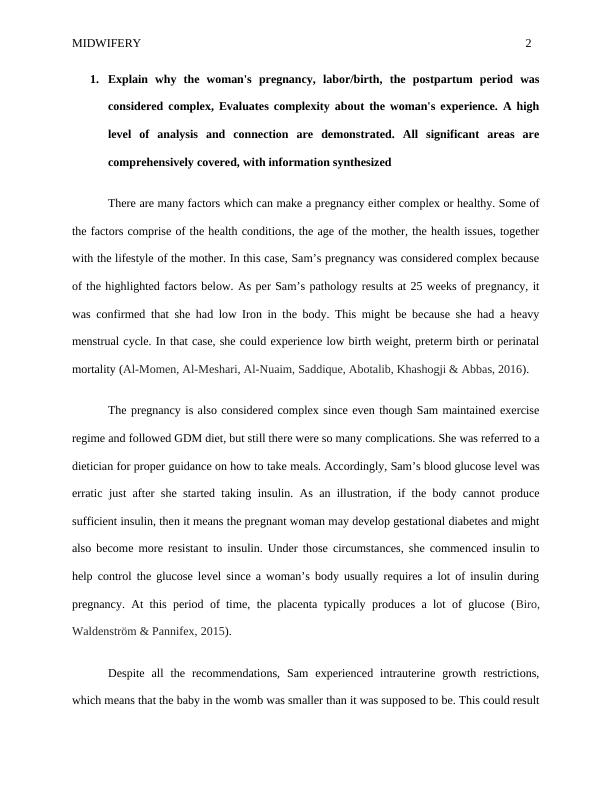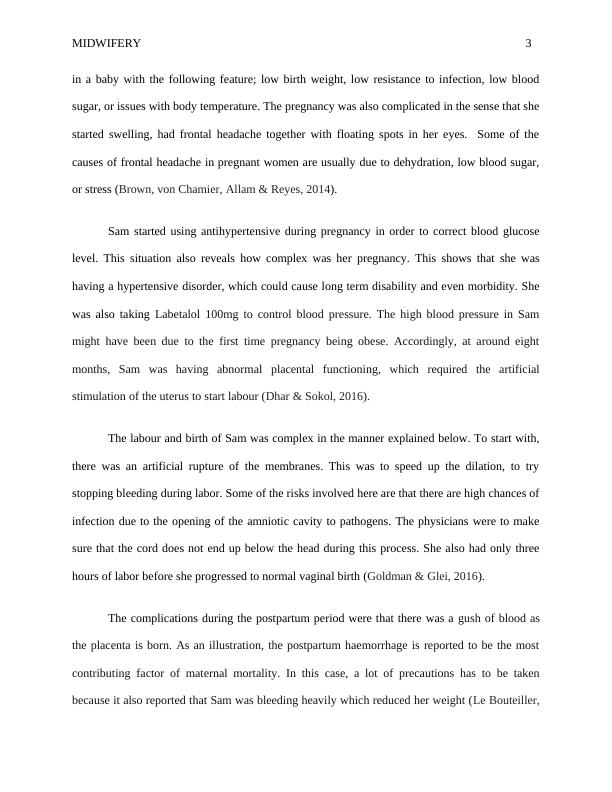Complexities in Midwifery Care
A case study of a pregnant physiotherapist with gestational diabetes and low iron levels.
11 Pages2991 Words309 Views
Added on 2022-11-24
About This Document
This article discusses the complexities in midwifery care during pregnancy, labor, and the postpartum period. It explores the factors that make a pregnancy complex and evaluates the woman's experience. It also describes the impact on the woman's physical, social, and emotional wellbeing, as well as the care received by the woman and the neonate. The pharmacological management of the woman's complexities is discussed, along with the appropriate consultations and referrals.
Complexities in Midwifery Care
A case study of a pregnant physiotherapist with gestational diabetes and low iron levels.
Added on 2022-11-24
ShareRelated Documents
End of preview
Want to access all the pages? Upload your documents or become a member.
“To investigate different ways through which awareness about
|6
|431
|75
Gestational Diabetes: Assignment
|12
|3545
|475
Case Study Analysis for Dylan's Pregnancy: Priority Assessments, Urine Findings, Fundal Height, Fetal Heart Rate, Blood Test, and Teaching Points
|10
|1994
|420
HLTEN520B Contribute to the Care of Mothers and Babies
|6
|1569
|74
Essay on Complex Case Of Pregnancy
|11
|2764
|309
Midwife Essay | Identifying the Roles and Responsibilities of a Midwife
|12
|3816
|1273




